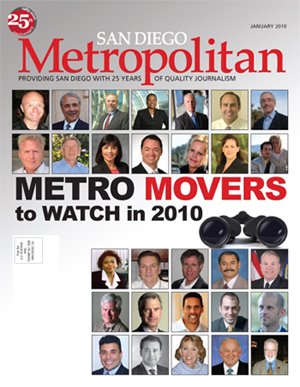METRO MOVERS 2010
San Diego Metropolitan Magazine is proud to present the 2010 Metro Movers. The honorees were chosen by our editors, a panel of judges and a number of individuals who made recommendations by responding to the request for nominees that appeared on our Website (sandiegometro.com). We’re grateful to all who contributed to help us mae these fifth annual awards as well as to our co-sponsors, The Monger Company and Higgs, Fletcher & Mack.
—Bob Page, Chairman & CEO
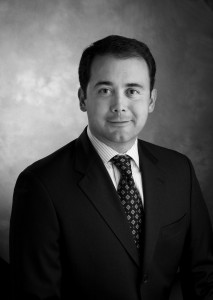
Alexis Gutierrez is the 2010 chairman of the San Diego chapter of the American Red Cross. It is the mission of the chapter to relieve human suffering by preventing, preparing for and responding to emergencies. Under the leadership of its board of directors and Gutierrez, San Diego and Imperial counties will become America’s most prepared in 2010.
The Red Cross is not a governmental agency, and relies on community donations of time and money to do its work. The local chapter volunteer board led by Gutierrez will lead this more than 100-year-old organization in providing community education, disaster response and relief, services to the armed forces and administration of the Women, Infants and Children Program.
The local chapter of the Red Cross serves more than 3.15 million people, covers 8,852 square miles and responds to a disaster nearly every 24 hours. Challenges in the next decade abound and Gutierrez brings vision, energy and passion to the organization, no doubt leading it into a successful 2010.
***
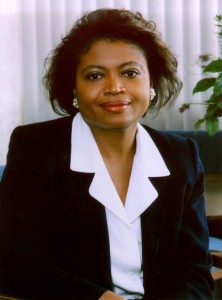
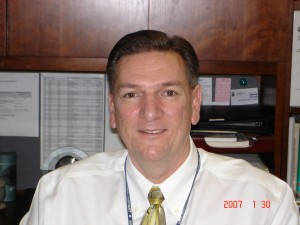
Thella Bowens, president/CEO of the San Diego County Regional Airport Authority, and Steven Cornell, director of the Authority’s Terminal Development Program, will oversee San Diego County’s largest construction job beginning in 2010. Called the “Green Build,” the project includes two contracts. Contract 1 is the addition of 10 new jet gates at Terminal 2, expanded dining and shopping options, as well as terminal and airfield improvements. Contract 2 work includes construction of roadways, parking lots, elevated departure curbs, buildings and bridges. The project is targeted for a LEED Silver certification. By the end of 2010, 1,000 construction jobs will be filled, and the Green Build is expected to be completed in late 2012 or early 2013.
Bowens and Cornell have taken the additional step to insure that this project will help put San Diegans back to work in 2010. The Green Build includes special provisions that will provide unique opportunities for San Diego County workers and contractors. For more than two years, the Airport Authority has been conducting outreach efforts to contractors throughout the county to keep them informed about the project and give them every opportunity to insure that they have the skills and qualifications needed to be qualified contractors for the project. To date, more than 1,000 contractors have registered through this outreach process.
Albert Einstein is quoted as saying, “In the middle of every difficulty lies opportunity.” Without question, governments at all levels are experiencing financial difficulty. And with health care services a considerable portion of government budgets, health care will play an important role. As the county’s director of Health and Human Services, Nick Macchione has the capacity to influence the quality of health care for tens of thousands of San Diegan’s through his interaction and impact on the myriad of health care services organizations throughout the county. Combined with the federal health care reform legislation efforts, the health care environment is ripe with enormous challenges while also holding great opportunity and potential for improvement. In the middle of this, Macchione, has chosen to “seize the opportunity” with his recently revealed strategy agenda and quality improvement initiatives for HHSA. Thus, it is certain in 2010 that Macchione will be faced with both a challenging environment and the opportunity to make a significant impact in the San Diego health care community.
However, we are confident that Macchione recognizes, as did Thomas Edison, “Opportunity is missed by most people because it is dressed in overalls and looks like work.”
Bob Adelizzi and David Kahn are partners in a dynamic effort to inject new energy into one of our city’s oldest and most distinguished cultural institutions, the San Diego Historical Society. Under their direction, the San Diego Historical Society is emerging from serious financial challenges and embarking upon a future that will offer cool, hands-on interactive exhibitions that will get people of all ages excited about our city’s heritage — while also helping all of us make better decisions about the community’s future. A museum and research library, the San Diego Historical Society was founded in 1928. Today it houses the premier treasure trove of materials that tell the stories of the diverse people who have made San Diego what it is today.
Adelizzi and Kahn came together at the Historical Society from different career paths. Adelizzi, president of the Society’s volunteer board of trustees, is an attorney and former banking CEO who now chairs the Monterra Corp., a real estate consulting company. Kahn, prior to coming to San Diego in 2008 to become the Historical Society’s executive director, managed history museums such as the Brooklyn Historical Society and the Connecticut Historical Society. Neither of California’s two other great cities, San Francisco or Los Angeles, even has a historical society. But San Diego certainly does, which underscores the importance of their community work.
***
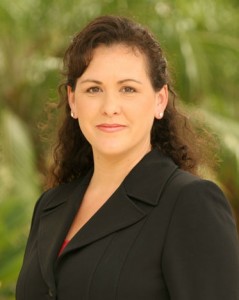
Lorena Gonzalez is the secretary-treasurer/CEO of the San Diego and Imperial Counties Labor Council, AFL-CIO. Elected to her position in January 2008, she is the first woman, and the first minority, to serve as the leader of this influential organization. Gonzalez, the daughter of an immigrant farm worker and a nurse, knows the value of hard work. She earned a bachelor’s degree from Stanford, a master’s degree from Georgetown and a law degree from UCLA.
As demographic changes continue to evolve in San Diego politics, Gonzalez will be in the center of it all. As a result of the efforts of Gonzalez and the Labor Council in the November 2008 elections, the eight-member San Diego City Council now enjoys a six-vote majority, and the San Diego Board of Education has a labor friendly three-vote majority.
However, 2010 will present a new level of challenges to the political clout that unions have worked hard to establish in the San Diego region. In June, an “anti-project labor agreement” initiative will be in front of Chula Vista voters. Deemed unacceptable by labor interests, all eyes will be on Chula Vista, and a similar proposal could end up in front of San Diego voters in November. Gonzalez will be leading the Labor Council as it prepares for these high-stakes election battles, the outcome of which could have a big impact on San Diego’s construction landscape in 2010.
***
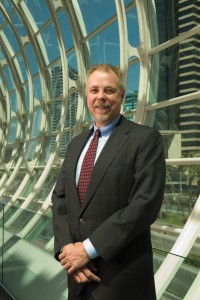
Bob Nelson, Carol Wallace and the San Diego Convention Center are poised at a major fork in the road leading in to 2010. Challenged to stay competitive, the center must expand in order to keep Comic-Con and other larger convention groups. Nelson, as chairman of the board, and Wallace, as president and CEO, embody the unique leadership team needed to create a financing plan and construction timeline to accomplish this goal.
Nelson brings his reputation as a savvy public relations professional and keen political adviser to this task. With 30 years experience in the community including several highly controversial issues, Nelson is well-connected and poised to help the board navigate this political process.
As the respected, long-time convention center CEO, Wallace is highly regarded for her management skills, which have helped turn the Convention Center into an economic powerhouse for San Diego. She has assembled a skilled staff ready to provide the support and leg work for this complicated venture. No question that in 2010, Bob Nelson and Carol Wallace will have a big impact on the Convention Center and the future of San Diego tourism industry.
***
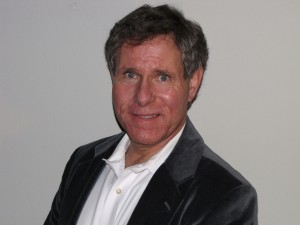
In 2004, Tom Shepard and Adrian Kwiatkowski teamed up for the successful campaign to approve a strong mayor-council form of government for the city of San Diego. With that initiative sunseting in 2010, the duo is back on the stump asking voters to make the strong mayor form of government permanent in the upcoming June election.If voters don’t support Shepard and Kwiatkowski’s arguments, the city will return to the city manager system that existed here for over 70 years, and many believe contributed to a lack of accountability at City Hall.
Shepard, a Republican, has almost 30 years of experience to draw upon as he navigates yet another critical policy initiative at the ballot box. It was Shepard who ran the campaign to get the waterfront Convention Center built in 1983; to get it expanded in 1998; and to support the construction of Petco Park 1998.
Kwiatkowski, a Democrat, has over 10 years experience advocating for complex and controversial issues such as the clean needle exchange, and has also worked on numerous campaigns, including Proposition B in 2008 to save the 10th Avenue Marine Terminal as well as other city and state races.
The issue of leadership at City Hall and particularly the strong mayor form of government is easily the most significant public policy issue to face the voters over the past 50 years. The efforts of Shepard and Kwiatkowski in 2010 will reverberate for years to come in San Diego politics.
***

Mark Fabiani, special counsel to San Diego Chargers President Dean Spanos, joined the Chargers in 2002 with a primary mission: work with the greater San Diego community to explore opportunities for a new state-of-the-art football stadium in the San Diego region. Fabiani is nothing if not thorough, working with San Diego, Chula Vista, Oceanside and Escondido on potential sites. He has repeatedly said that it is the Chargers organization’s preference to stay in San Diego County.
And now the search has returned to city of San Diego. Why the sudden new interest and subte urgency? The City of Industry, just off I-5 south of Downtown Los Angeles, is building a stadium on a fast-track schedule, thanks to Gov. Schwarzenegger, who gave the project a pass on the normal environmental road to development, and has come a’courtin.
Still, the Chargers want to stay here, Fabiani insists, and in a recent newspaper editorial, he raised some good points: to stay in the aging Qualcomm Stadium through 2020, the city of San Diego would likely need to spend $300 million to keep it operational. If the Chargers move to Downtown San Diego, the site they’re considering is just 10 acres, the smallest NFL site, and would requiring additional financing than the $300 million of so the Chargers and NFL can afford. Are there possibilities for some sort of city contribution? Fabiani muses what the Qualcomm site would net the city in a sale or lease arrangement. Next February, the Chargers again enter into a period where they can exercise an option to leave. Stay tuned for breaking news.
***
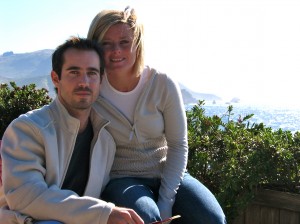
Marcella Di Michieli and Nick Bauman operate the highly successful San Diego Bike & Kayak Tours at La Jolla Shores. Michieli, president, founded the company in 2004. Bauman, now vice president, joined her two years later. Together this dynamic couple has built one of San Diego’s leading adventure tour companies that now includes not only kayak tours, but snorkeling tours of the La Jolla Cove, and bike tours of Mt. Soledad.
But Michieli and Bauman’s reputation goes beyond just successful business owners as they have become recognized as industry leaders. Their leadership role in the kayak tour industry emerged in 2008 when the city of San Diego, bowing to pressure from the La Shores Community, sought a way to provide better order and safety to the crowded, summer kayak operations at the beach. San Diego Bike and Kayak was one of the few businesses to support the city’s efforts and provide constructive ideas and suggestions to protect kayak customers and also be sensitive to the surrounding residents. Later, when the city introduced a concession licensing program requiring detailed operating proposals from all the Kayak operators, San Diego Bike & Kayak’s proposal finished first out of seven operators.
San Diego Bike and Kayak has become the role model for how a business that operates in public areas can be very successful while at the same time being mindful of how their activities impact the surrounding residents. In 2010, the company will continue to expand their business with new locations in Coronado and Carlsbad.
***
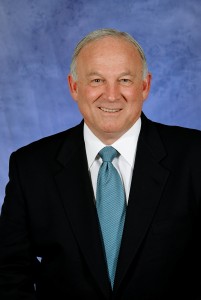
Probably no one will have a greater impact on San Diego in 2010 than Mayor Jerry Sanders. Former police chief, United Way CEO, chairman of the San Diego Red Cross hcapter, he is the first mayor to serve under the strong ayor form of government approved by voters in 2004.
With two years left in his final term, 2010 will be the pivotal year for his mayoral legacy and for the city of San Diego. First, the future executive authority of the Office of the Mayor rests in large part on Sanders’ reputation as mayor. A strong public approval rating is likely to result in voters making the strong mayor form of government permanent when the issue comes before them in the June, 2010.
Meanwhile, Mayor Sanders continues to be challenged by a myriad of events, some outside of his control such as wildfires, the City’s pension and budget crisis, and the economic downturn. Amid these burning issues, he is faced with if, and how, to replace decaying Ccty facilities, including the Civic Center, the Main Library and Qualcomm Stadium – all built in the 1950’s/60’s and all near or beyond their useful life. And don’t forget – the economic powerhouse Convention Center is in need of an expansion to stay competitive as a major convention destination.
But knowing Sanders and the steady, determined demeanor that has helped him resolve so many important issues over the past six years, we expect that his strategy will continue to be: If it’s good for San Diego, let’s find a way to get it done.
***
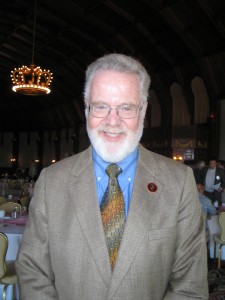
Stephen L. Weber is president of San Diego State University, which ranks among the largest educational institutions in the nation. Under President Weber’s guidance, students, faculty, staff, alumni and community leaders have participated in shaping “Shared Vision,” — a road map for the university’s future with goals such as reinforcing academic excellence, nurturing students, honoring diversity and social justice, carefully stewarding resources and further developing global programs.
Not afraid of controversy, Weber has proposed altering the university’s admittance policies in the midst of record applications for the 2010/2011 academic year. Weber is faced with drastic state budget cuts and the challenge of identifying and admitting those students most likely to graduate. He has shaken local school district officials and San Diego applicants as well by proposing to admit more out-of-area students who have demonstrated stronger academic performance than their San Diego counterparts. Local area students have until now enjoyed a preference in applying to SDSU, even though their likelihood of graduation may be less than an applicant from elsewhere in the state.
While stirring up criticism from some sectors, Weber’s move is being applauded by community and business leaders who see this as an opportunity for San Diego to assess the quality of our K-12 education and insure that the region remains competitive with the rest of California.
***
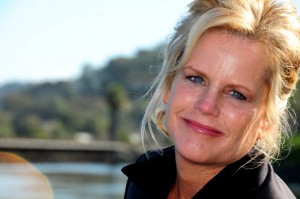
Kelly Sarber is one of the most respected names in our nation’s clean tech industry where she has helped shepherd the development of renewable energy and environmental projects valued at a cumulative worth of more than $2 billion.
A native San Diegan born to a Navy SEAL family in Coronado, this Harvard Business School educated professional currently represents Sempra/SDG&E and Southern California Edison on their $90 million restoration of the San Dieguito Lagoon near the Del Mar Fairgrounds. Considered one of the largest, man-made coastal estuaries in the United States, the project has taken 16 years and 22 permits, with completion expected in spring of 2010. Scientists across the country are lauding the project for its mixed-use habitat and blending of environmental and recreational benefits.
2010 will also find Sarber pursuing her latest project – a biomass renewable energy facility to be located in downtown San Diego. Sarber has teamed with SDG&E and a local waste hauler to study the feasibility of importing a proven technology from Europe that creates renewable energy from food wastes generated by local restaurants, hotels, and the convention center. It would be the first commercially operated recycling facility in the country geared toward creating energy from organic wastes.
***
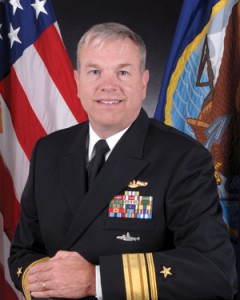
Last August Rear Adm. William French assumed command of Navy Region Southwest, which has now solidified its position as the Navy’s West Coast hub. Five more cruisers and destroyers and three additional submarines were added to Navy Region Southwest’s fleet last year, and in 2010 a third aircraft carrier, the Carl Vinson, will make North Island Naval Air Station its home.
French, 51, is a submarine officer and graduate of the Navy’s Nuclear Power Training. He has seen sea tour duty aboard the submarines Tecumseh, Spadefish and Sea Devil. He served as executive officer of the USS Helena and commanded USS Salt Lake City, homeported in San Diego. He was later deputy commanded of the Point Loma Submarine Squadron 11 and served as commander of Naval Forces Marianas in 2007.
Now this submariner’s people skills, honed from years of working with sailors in close quarters, will surface as he builds morale of sailors, their families the community as San Diego’s unofficial “Navy Mayor.”
***

When Chris Van Gorder was suddenly named CEO shortly after arriving at Scripps Health in 1999, Scripps was in trouble. It was losing $15 million a year, its medical staff had voted no confidence in management and employee morale had hit bottom. Van Gorder responded to the crisis with a direct and steady approach. He implemented a transparent, participatory management style and created a physician leadership cabinet, which dramatically improved physician relations and is now a model for other health systems. He streamlined business operations, built strategic alliances, enhanced internal efficiencies and improved employee satisfaction. President and CEO since 2000, Van Gorder has led the nonprofit health care system through a remarkable financial and cultural turnaround and in the process has positioned Scripps among the nation’s leading health-care institutions.
Van Gorder’s rise to health-care executive has been unconventional. His journey began as a hospital patient, when, as a police officer, he was critically injured during a family dispute call. After a lengthy recovery and starting a new career in hospital security, Van Gorder continued his education in health-care management and rose to levels of increased responsibility. In 2010, having completed a $125 million turnaround, Van Gorder will lead Scripps in a $2 billion growth and expansion plan across the region. Its workforce is also thriving, as Scripps was named to Fortune magazine’s list of “100 best companies to work for in America” in 2008 and 2009.
***
![miles_mcpherson_photo[1]](http://sandiegometro.com/wp-content/uploads/2010/01/miles_mcpherson_photo1-214x300.jpg)
“Do Something! Make your life count.” That’s the title of a new book by Miles McPherson, pastor of the Rock Church, founded in 2000. “Do Something!” is also a credo of the Rock church philosophy with a goal to harness 600,000 hours of community service by its parishioners in 2010.
“That’s 50,000 hours a month,” says McPherson, noting that a total of 100,000 hours will be channeled to projects requested by San Diego Mayor Jerry Sanders.
It shouldn’t be too difficult to achieve that goal, with an average attendance of 12,000 parishioners at five services every Sunday at The Rock Church at Liberty Station; adjacent to the church is the Rock Academy, a private Christian school now serving more than 300 students in grades K-12. The Rock’s ministries reach out to a number of previously underserved or unserved communities including homeless kids and kids foster care, residents in convalescent homes, prison inmates and strippers. McPherson, a former San Diego Charger defensive back, says he was healed of cocaine addiction in one day: Aril 12, 1984, the day he gave his life to Jesus.
***
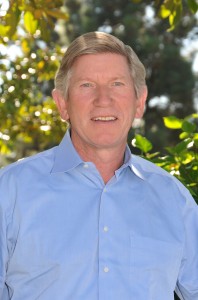
Ian Gill is a founding principal of and provides strategic direction for Highland Partnership, a full service commercial general contractor and design builder providing quality construction services for public and private enterprises throughout the nation, concentrating efforts on Southern California. Gill, born in Edinburgh, Scotland, became a naturalized U.S. citizen two years ago.
A LEED 2 certified professional who is a past president of the San Diego chapter of the Building Industry Association and a past president of Lambda Alpha (the San Diego Land Economics Society), Gill has more than 30 years experience in real estate development and construction, comprising commercial, industrial, residential and institutional projects in the United States and Great Britain.
At a time when many builders are hard-pressed to find work, Highland is busy on multiple projects throughout San Diego and Orange counties. The company is 60 percent complete on the Vista Civic Center and is the Design Builder for the 100,000 square foot, $65 million, LEED Silver Irvine Public Safety Headquarters in Heritage Fields, the old El Toro airfield site. Highland is also acting as general contractor for a 250 unit, 17-story all-affordable housing project at 9th and Broadway for Bridge Housing, scheduled to begin construction in the spring of 2011. And, it is currently working with Children’s Hospital on a planned medical office building in Oceanside.
***
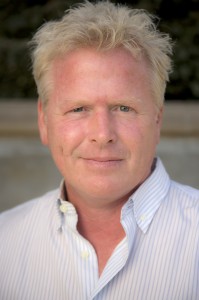
Dean Loring, president and CEO of Burger Lounge Restaurants, grew up in the food business in Northern California. His family owned a small seafood distribution company and later a meat processing operation. He started cooking at home for friends during lunch while in middle school. Loring started his first “better burger” concept in 1987 at age 29 using grass-fed beef and handmade buns in Humboldt County. He founded and continues to operate Cody’s La Jolla in 1998 at the cove in La Jolla. It was awarded the San Diego Zagat Guide 2008 “Best American” designation.
After years of wanting to get back to fast casual dining, Loring conceived and co-founded Burger Lounge in January 2007. His founding motto is: “success is to do a common thing, uncommonly well.” Burger Lounge has grown to four units over the past two years in La Jolla, Kensington, Coronado and Little Italy and has received several Readers Awards for “Best Burger” from area publications.
Now the company has its eyes on the Los Angeles market for 2010. “We are exploring new equity partnerships while we continue our self-funded organic growth,” says Loring. “The key to our growth is two fold: we want to continue at a sustainable pace that is commensurate with our infrastructure. This is hand-made food. It takes a lot on energy to maintain this level of quality and we do not want to compromise that by growing too quickly.”
***
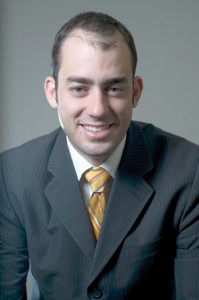
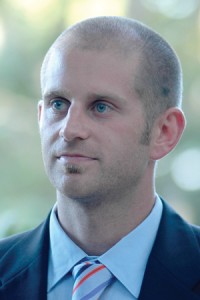
Scott Lewis is CEO and Andrew Donohue is editor of the pioneering nonprofit investigative news source, voiceofsandiego.org. Lewis oversees the operation, which the Christian Science Monitor called “a ray of hope for a troubled industry.” He oversees its Website, business, fundraising and marketing functions. Most importantly, though, he must ensure that it continues to grow and innovate appropriately as the news industry changes.
Lewis began covering local politics for the voiceofsandiego.org in 2005 and his weekly column was awarded best column in San Diego by both the San Diego Press Club and San Diego Society of Professional Journalists in 2007. He maintains a political blog and regularly breaks news and hosts some of the city’s most important discussions. He is a graduate of the University of Utah and held reporting jobs at the Salt Lake City Weekly and San Diego Daily Transcript before working with voiceofsandiego.org.
Donohue is in charge of Voice’s content, including everything from blogs and daily news coverage to long-term investigative projects. He is a national award-wining writer and editor, and his awards include the 2008 Investigative Reporters and Editors Certificate and 2006 Society of Professional Reporting’s Sigma Delta Chi award for investigative reporting. Donohue has fostered the online daily’s growth from a small ragtag group of reporters in a cramped, dark and dirty office to an established and expanding news outlet that’s being replicated in other markets.
This year, voiceofsandiego has a new Website that will allow the news source to introduce several new features that will help it “tell better stories and keep local leaders accountable in innovative ways,” Lewis said. ‘We have our largest editorial team ever and have received funding to expand into new areas our users have long asked us to consider.”
At age 44, Yale Law graduate John Gomez is arguably the nation’s premier Latino trial lawyer. A leader in San Diego’s Latino business and philanthropic communities, in 2005 John Gomez founded the Gomez Law Firm, specializing in employment law and personal injury cases. Now, five years later, the firm has grown to six attorneys and last year obtained verdicts and settlements in excess of $1 million each in more than ten separate cases. Gomez was named Outstanding Trial Lawyer of the Year in 2006 by the Consumer Attorneys of San Diego. He has been named a Top 50 San Diego “Super Lawyer,” one of the Best lawyers in America and a Top 10 Corporate and Insurance litigator.
Last year he served as board president for La Cuna, a nonprofit dedicated to Latino foster children, and endowed a scholarship fund for La Raza Lawyers. In 2010, Gomez will tackle Toyota and Bob Baker Lexis in his biggest case yet. The Saylor and Lastrella families have hired Gomez to represent them in their pending wrongful death case for the Aug. 28, 2009 death of CHP Officer mark Saylor, his wife, child and brother-in-law. The family all died when the accelerator of their loaner Lexis stuck, prompting the largest recall in Toyota history and attracting national media attention.
***
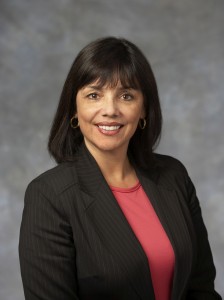
As president and CEO of San Diego County Credit Union, San Diego’s largest locally based financial institution, Irene Oberbauer will continue to lead with foresight, leadership and direction in 2010 and beyond. Since Oberbauer was appointed to her posts in 2007, SDCCU has continued to grow. Even in the midst of adverse economic conditions, SDCCU’s customer base has increased by 8 percent , asset size by over $1 billion and membership has expanded to include Orange County residents and workers. In 2010, the credit union will reach its $5 billion asset mark and continue to lead San Diego-based credit unions, and maintain its status as one of the largest and most successful credit unions in the nation.
Oberbauer and her senior management team plan to pay special attention to key technology issues in 2010 with new products launching that will expand online services to its customers. SDCCU will also remain competitive by keeping its loan rates low and its products competitive to continue its drive for new loan and deposit growth.
As a community leader, SDCCU, under Oberbauer’s management, continues to support more than 75 nonprofit organizations, including the San Diego Blood Bank, national Multiple Sclerosis Society, United Cerebral Palsy, San Diego Burn Institute, Rady Children’s Hospital San Diego and Make-a-Wish Foundation of San Diego. SDCCU has also recently announced its continued commitment to sponsor the Poinsettia Bowl, which benefits the Make-a-Wish Foundation of San Diego.
***

James Robbins is the principal in charge of design at Robbins Jorgensen Christopher Architects. He is NCARB certified and a LEED-accredited professional. Under Robbins direction, RJC Architects has won 35 design awards since 1992.
As a past president of AIA San Diego and a past board member of AIA California Council, Robbins has a long record of public service, including membership in the Mayor’s Design Advisory Group, the city of San Diego’s multi-family Design Guidelines Task Force and the Old Town Trolley Extension Task Force. He served as consultant for historic architect for the Centre City Development Corporation from 1996 – 2001.
A graduate of Princeton University and with a masters of architecture from Rice University, Robbins was named the Best Architect in San Diego in a reader’s poll some years back from this magazine.
***
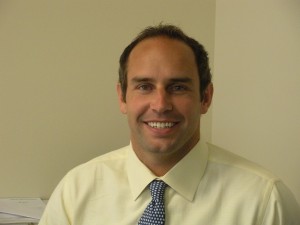
Courtland Weisleder is the founder of Greener Dawn Inc., Greener Dawn Investment Group, and Greener Dawn Financial Corp. His passion for alternative energy, renewable energy, and clean technology led him to define and build a vision for the future. He first became immersed in this field while studying at the University of San Diego in the Masters of Science in Real Estate program. Academic research as well as industry professionals contributed to his thirst for green knowledge and hunger to build his vision. He attends numerous conferences, seminars, and trade group events and actively contributes in the clean tech sector. He is on the Sustainability Committee of the Downtown Partnership, the Board of Directors of Clean Tech San Diego, and the Board of Directors of the San Diego Green Chamber of Commerce.
Last month, Greener Dawn Residential was approved as a Building Performance Institute training affiliate, a nationally recognized certification and credentialing organization for residential energy efficiency, and approved by the Obama administration as the standard required for contractors in the proposed “Cash for Caulkers” program. Weisleder’s firm is the only BPI approved trainer headquartered in San Diego and looks to be an important player on the national scene.
***
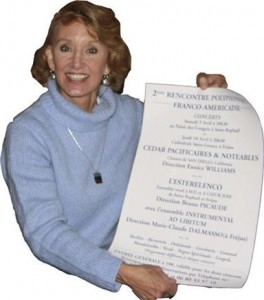
Eunice Williams is the music director of San Diego Continuing Education and conducts three choruses: Pacificaires, Cedar Center Chorus and NOTEables. She leads more than 100 adult singers in over 20 hours of practice and rehearsals weekly. The majority of the singers are senior citizens and some are in their 90’s. Williams provides all the singers with the opportunity to grow and improve their wellbeing through music.
For each of her groups, Williams spends countless hours working to ensure that the singers have all the tools necessary to improve through music. She copies music scores, concert fliers and programs at the district office herself and then records a practice CD of 20 to 15 songs for each of the four voices and insists that the singers continue to grow and learn as they expand their repertoire.
Williams also brings the joy of music to senior citizen audiences all over the county. Many of these seniors are wheelchair bound and most appreciative of hearing voices lifted in song.
***
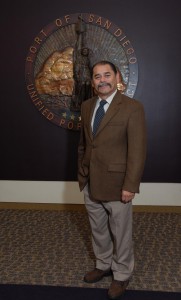
Robert “Dukie” Valderrama from National City will chair the San Diego Unified Port Commission in 2010. Valderrama believes that through the strength of partnerships, ideas blossom and businesses flourish. That is why he will lead the seven-member Port of San Diego board with a focus on the Port’s partners: its customers, tenants, neighbors stakeholders, the region’s residents and the citizens of California.
Valderrama is a working-class man, born and raised in National City. He runs two businesses and knows government contracting well. Top on his list of priorities is the development of the Chula Vista bay front; the ground-breaking for the North Embarcadero esplanade along San Diego’s front porch; and the development of a park for the residents of National City near the Sweetwater Channel. Meanwhile, 2010 will also see Commissioner Valderrama and the Port District’s resources challenged by the proposed Convention Center Expansion and the massive Lane Field Project.
So many opportunities challenged by very limited resources. No question that Commissioner Valderrama and the Port District are poised to have a big impact on San Diego and the region in 2010.

